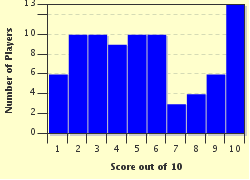Quiz Answer Key and Fun Facts
1. The short story "The Snows of Kilimanjaro" was first published in the August 1936 edition of what popular American magazine?
2. In the original Grimm Brothers story "Snow White and the Seven Dwarfs", what happens to the evil Queen at the end?
3. What unflattering historical US action is central to the plot of David Guterson's "Snow Falling on Cedars"?
4. "Snowflake Bentley" was the 1999 winner of what award given annually to the illustrator creating the most distinguished US children's picture book of the year?
5. Whose "sense of snow" is at the heart of Danish author Peter Høeg's international best selling book from 1994?
6. What Turkish author of "Snow" ("Kar" in Turkish) received the 2006 Nobel Prize for Literature?
7. Hans Christian Andersen's classic fairy tale "The Snow Queen" begins with the breaking of a mirror created by the Devil to perform what evil trick?
8. What Neal Stephenson novel from 1992 was chosen in 2005 as a "Time Magazine" All-TIME 100 Novel (for books published in English after 1923 when "Time" started publication)?
9. Kawabata Yasunari became Japan's first winner of a Nobel Prize for Literature in 1968. What novel is considered by many to be his masterpiece?
10. Not all books about snow are written by Nobel laureates. What contemporary romance author, who has sold over 100 million books and has had over 50 bestsellers on the "New York Times" Bestsellers List, wrote 2003's "The Snow Bride"?
Source: Author
adam36
This quiz was reviewed by FunTrivia editor
looney_tunes before going online.
Any errors found in FunTrivia content are routinely corrected through our feedback system.

